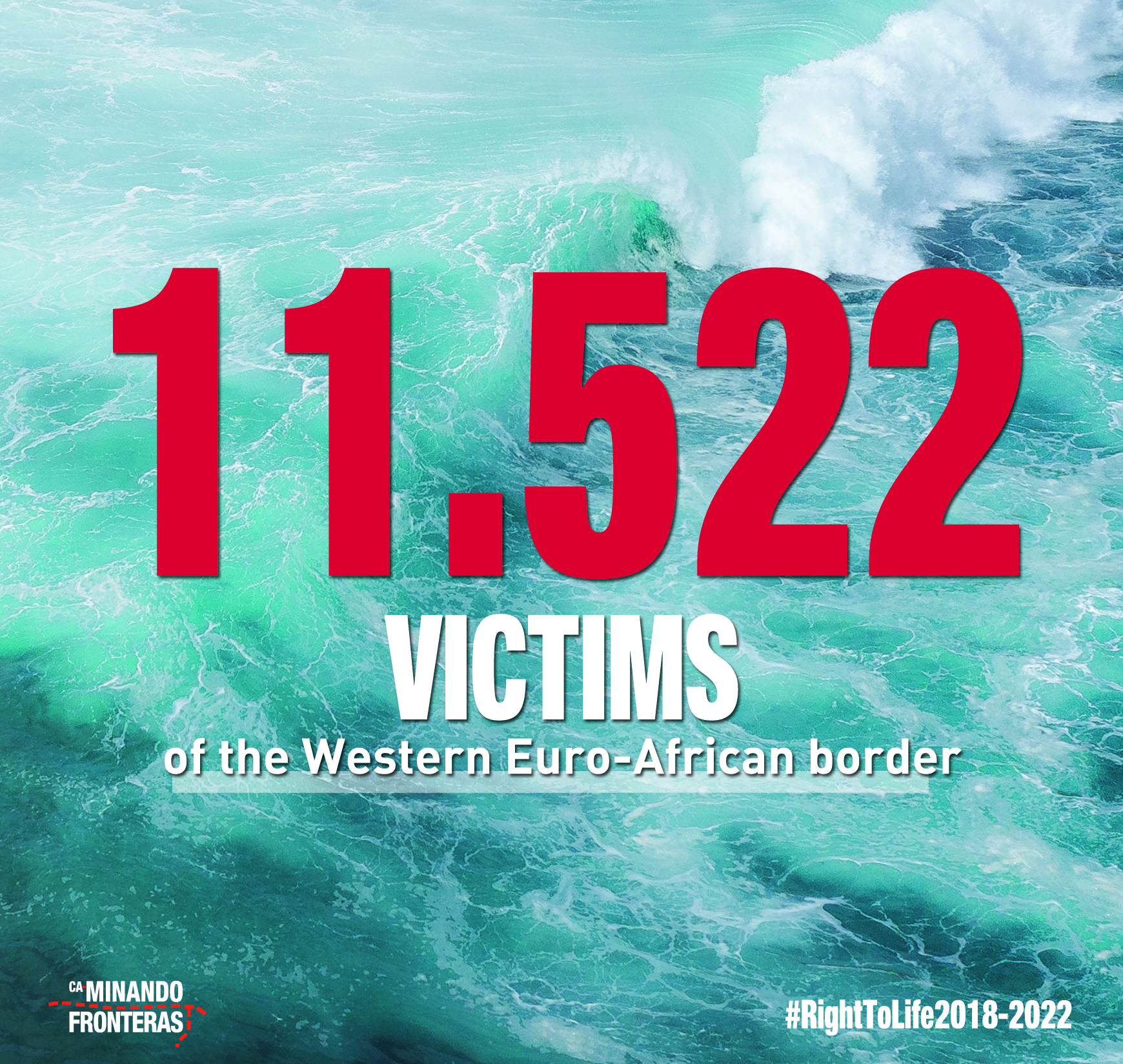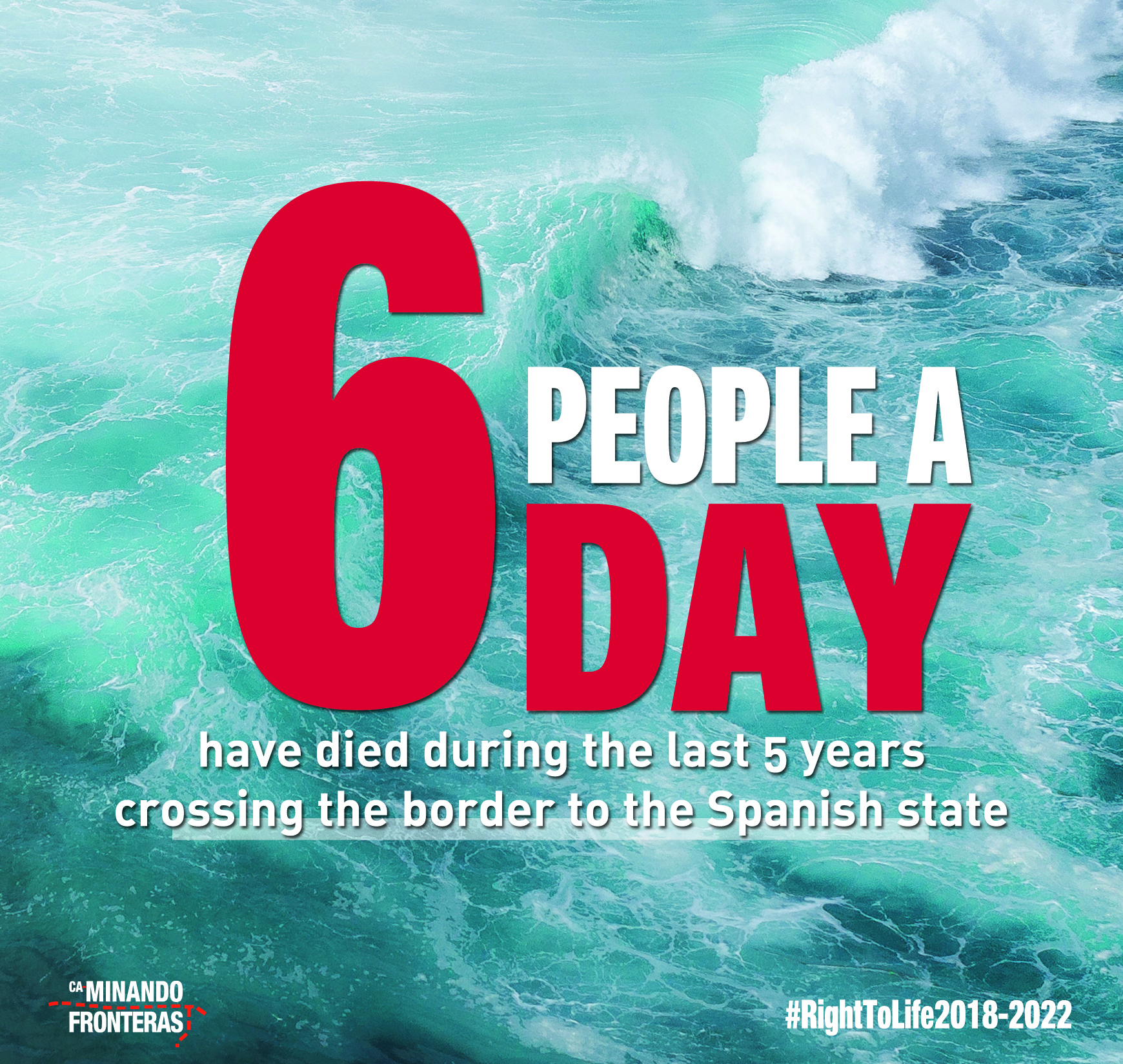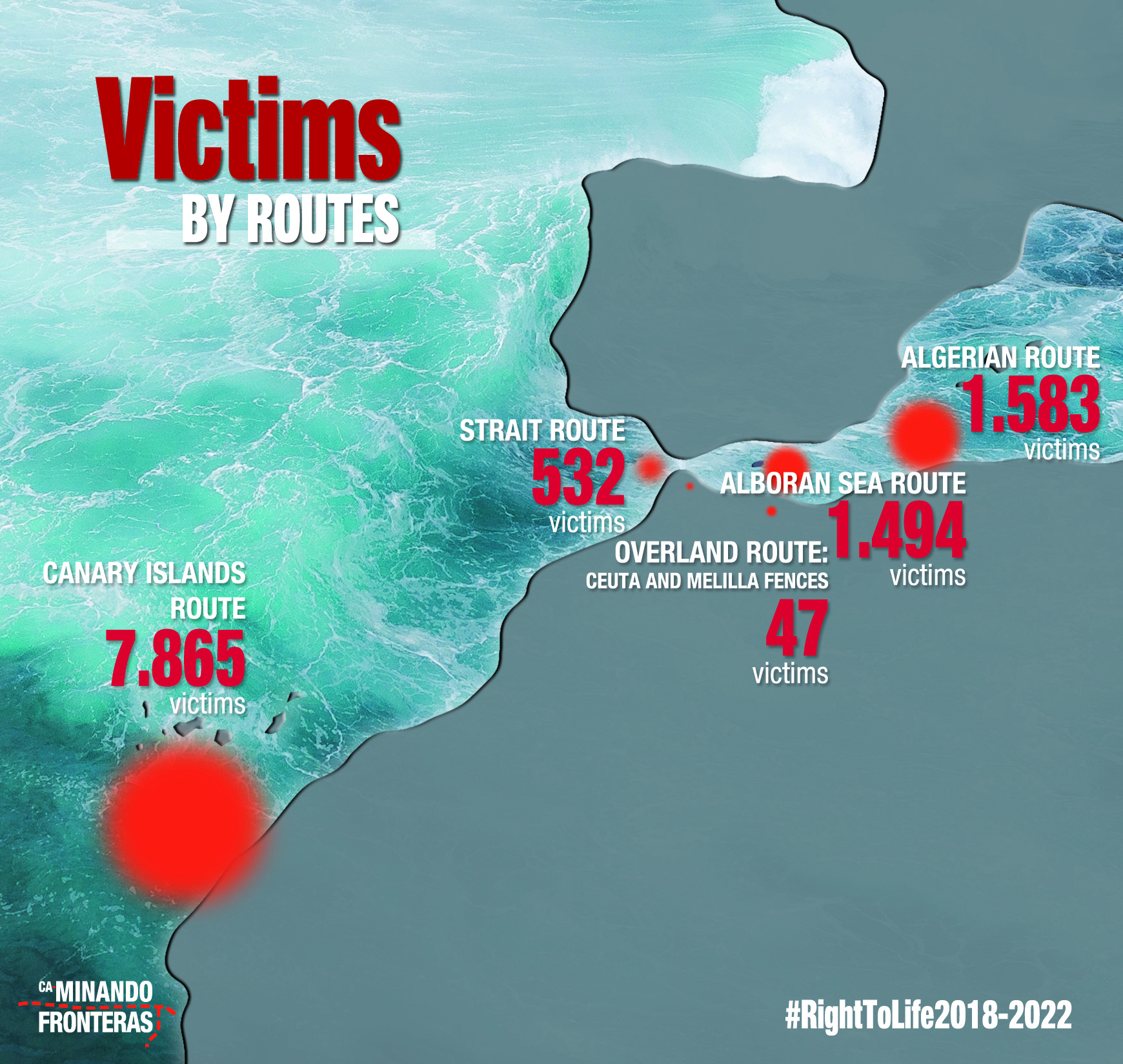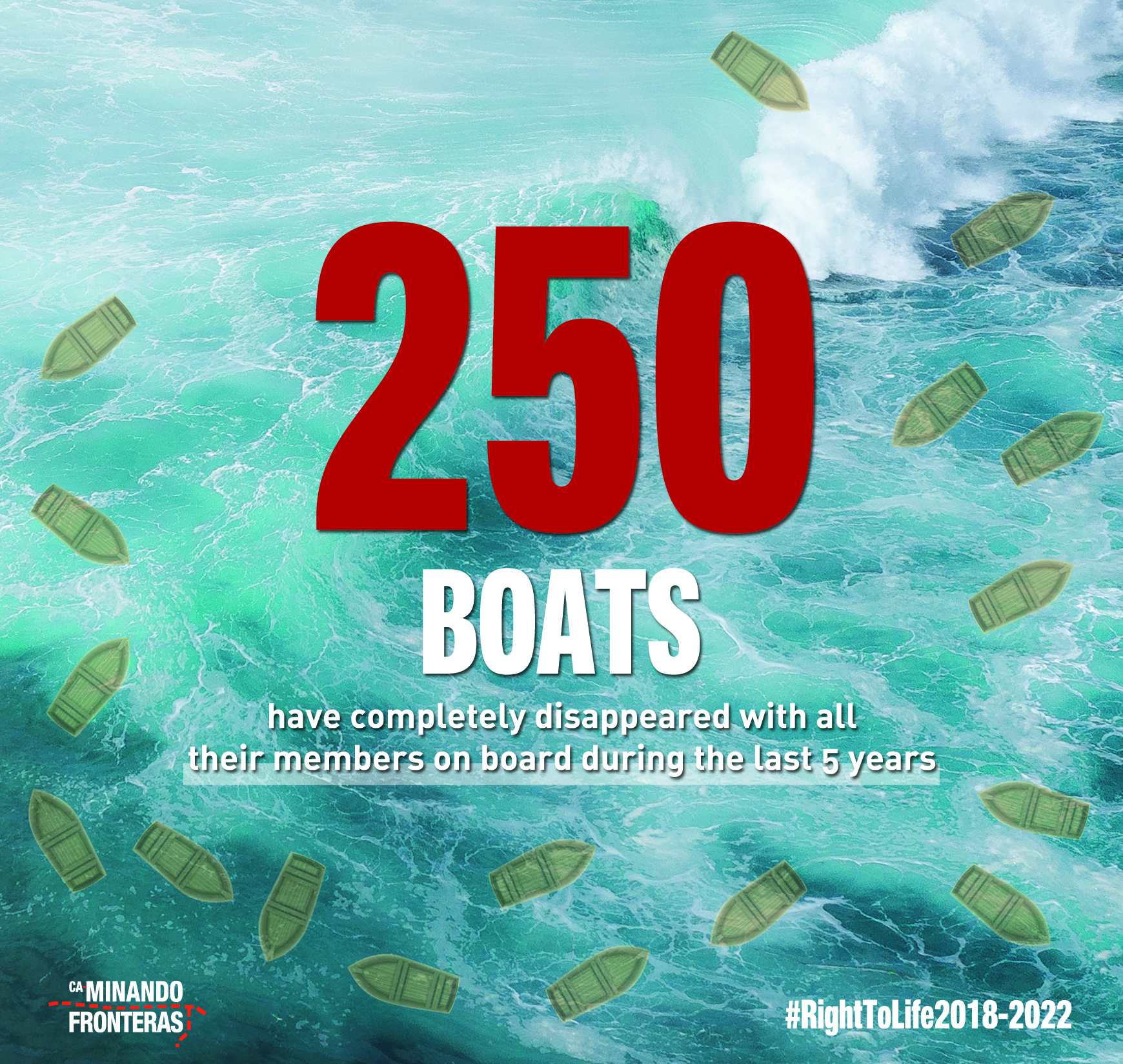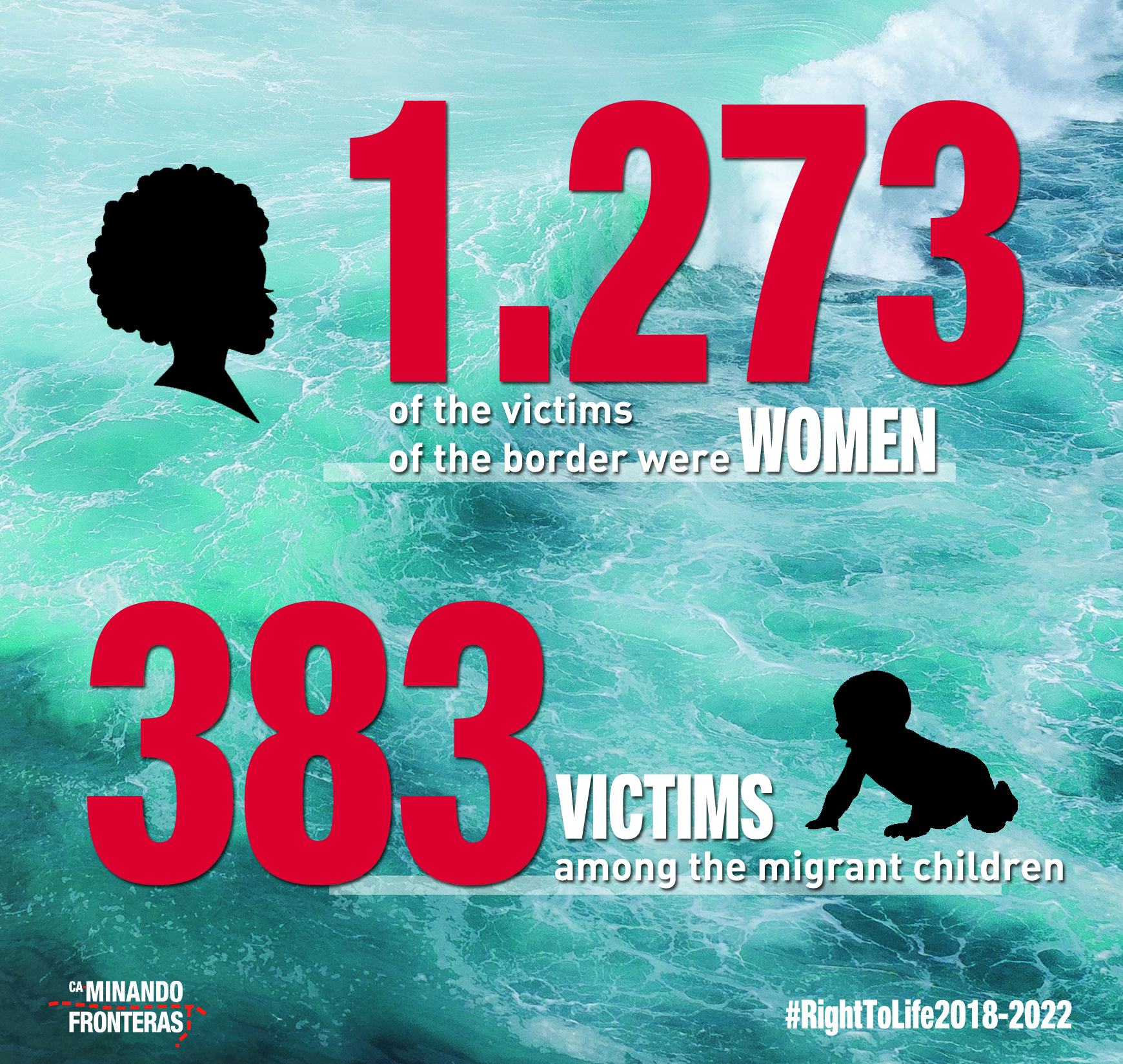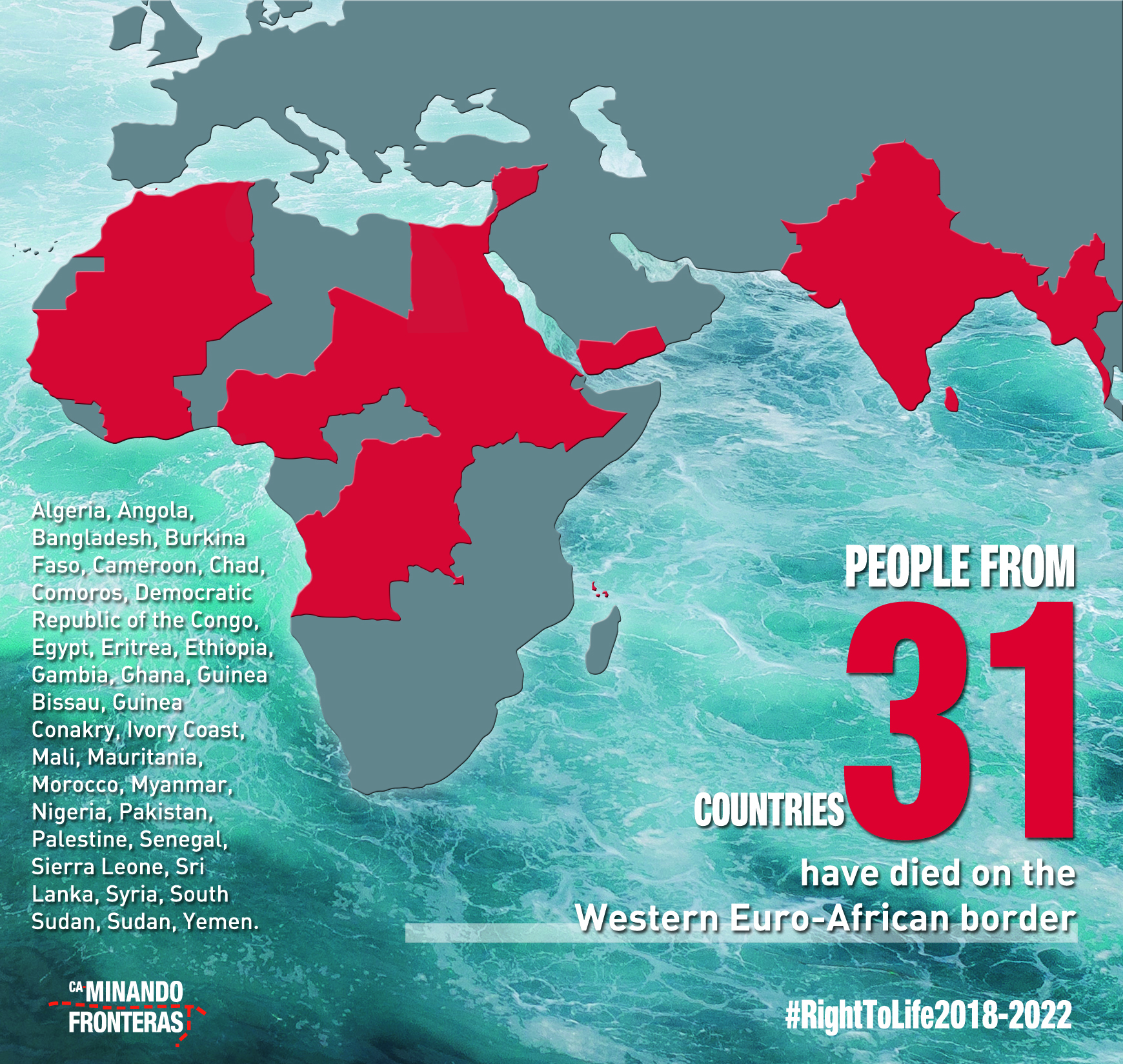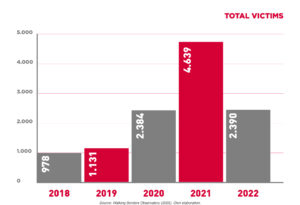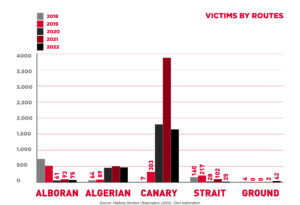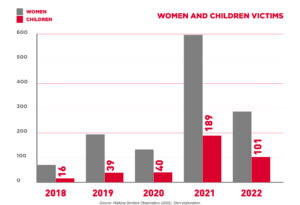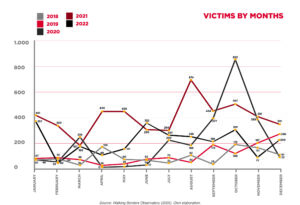The data presented here are the product of exhaustive monitoring carried out by Ca-minando Fronteras 365 days a year. Working with migrant communities, rescue services, family networks and human rights defenders on the ground, we collect, confirm and systematise the necessary data.
This data collection work forms part of our Observatory of Human Rights on the Western Euro-African Border. We founded the observatory in 2014 after receiving alerts from vessels in distress on different migration routes from Africa to the Spanish State over a seven-year period. The observatory began to operate in 2015.
Although we publish annual reports on the data collected by the Observatory, this report updates the number of victims on the western Euro-African border from 2018 to 2022 (up to 30 November 2022) and presents a diachronic analysis that offers insight into the impact of necropolitics over a longer period of time.
Who are we investigating for and why? The knowledge that we produce is intended for use within migrant communities by family members looking for their missing loved ones. Our priority is to develop a plan to defend life at the border in partnership with people on the move and victims’ families. The numbers and stories presented in this report play an essential role as we work towards greater respect for human rights. Memory must remain with us, lighting the way to truth, justice, reparation and non-repetition.
Download the report here, or scroll down to the bottom of the page to find it in Spanish, French and Catalan.
